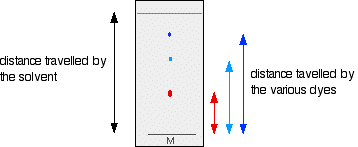Most Organisms have specific Defences in place to Prevent this from happening:
Skin - Physical Barrier Blocking Pathogens from Entering the Body. It is Also a Chemical Barrier because it Produces Chemicals that are Anti-Microbial and can Lower pH, Inhibiting the Growth of Pathogens.
Mucous Membranes - Protect Body Openings exposed to the environment (Mouth, Nostrils, Ears e.t.c.) Some Membranes Secrete Mucous that Traps Pathogens and Contains Antimicrobial Enzymes.
Blood Clotting - A blood clot is a Mesh of Protein Fibres. Blood clots Plug Wounds to Prevent Pathogen Entry and Blood Loss. They're Formed by a series of Chemical Reactions that take place when Platelets are Exposed to Damaged Blood Vessels
Inflammation - Swelling, Pain, Heat and Redness. Triggered by Tissue Damage which Releases Molecules which Increase the Permeability of Blood Vessels so they Leak Fluid to the Surrounding Area causing Swelling and helps Isolate any Pathogens. The Molecules cause Vasodilation (Blood Vessels get Wider) which Increases Blood Flow to the affected area. This makes the area Hot and brings White Blood Cells to the affected area to Fight Off any Pathogens.
Wound Repair - The Skin is able to Repair Itself in the event of an Injury. It reforms a Barrier against Pathogen Entry. The Surface is Repaired by the Outer Layer of Skin Cells Dividing and Migrating to the Edges of the Wound. It then Contracts to bring the Edges of the Wound Closer Together. It is Repaired using Collagen Fibres. If there are too many collagen fibres, you'll get a Scar.
Expulsive Reflexes - This is basically Coughing and Sneezing. A Sneeze is when the Mucous Membranes of the Nostrils become Irritated by things such as Dust or Dirt. A Cough is when the Lining of the Respiratory Tract becomes Irritated. Both Coughing and Sneezing are an attempt to Expel Foreign Objects, including Pathogens, from the body. They happen Automatically.
Plants
Plants have both Physical and Chemical Defences too
PHYSICAL
- Most plant Leaves and Stems have a Waxy Cuticle, which is a Physical Barrier against Pathogen Entry. It may also Stop Water Collecting on the Leaf which will Reduce Risk of Infection by Pathogens Transmitted through Water.
- Plant Cells are surrounded by Cell Walls, another Physical Barrier against Pathogens that make it Past the Waxy Cuticle
- Plants produce a Polysaccharide called Callose. It gets Deposited between Plant Cell Walls and Plasma Membranes during times of Stress, i.e. Pathogen Invasion. Callose Deposition might make it Harder for Pathogens to enter Cells. Callose Deposition at the Plasmodesmata (Small Channels in Cell Walls) may Limit Spread of Viruses Between Cells.
CHEMICAL
Plants also produce Antimicrobial Chemicals (Including Antibiotics) which either Kill Pathogens or Inhibit their Growth.
E.g.
- Some plants produce chemicals called Saponins. These Destroy Cell Membranes of Funghi and other Pathogens.
- Plants also Produce Chemicals called Phytoalexins, which Inhibit the Growth of Funghi and other Pathogens.
Other chemicals secreted by plants are Toxic to Insects - This reduces the amount of insects feeding on plants, therefore, Reduces the Risk of Infection by Plant Viruses carried by Insect Vectors.


























